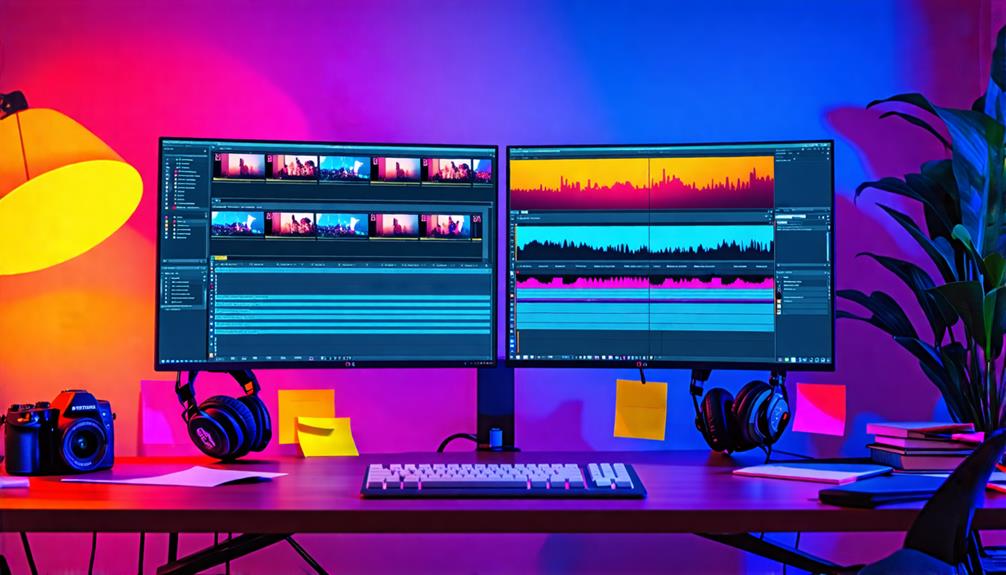How to Perform Manual Testing for Software Updates: A Step-by-Step Guide
Just as a master builder inspects every brick before revealing their architectural masterpiece, scrutinizing every detail is crucial when manually testing software updates. This meticulous process ensures not only that the software functions as intended but also that it meets end-users' expectations. As the gatekeeper of quality, you identify issues that automated tests might miss. But how do you ensure your testing process is thorough, efficient, and effective? Here are the essential steps to implement manual testing for software updates:
- Understand the Update: Begin by thoroughly reviewing the release notes and documentation for the update. Understand the new features, bug fixes, and any changes made to the existing functionalities. This will help you create a comprehensive testing plan.
- Prepare Your Test Environment: Set up the testing environment to mirror the production environment as closely as possible. This includes configuring hardware, software, network settings, and any other dependencies necessary for the software to run.
- Develop Test Cases: Write detailed test cases that cover all aspects of the update. Each test case should include a description, the steps to execute, the expected results, and the actual results. Prioritize test cases based on critical functionalities and user impact.
- Execute Test Cases: Methodically execute each test case, documenting any deviations from the expected results. Take screenshots or recordings where necessary to provide visual evidence of any issues encountered.
- Report and Track Defects: Log any defects found in a defect tracking system. Include detailed descriptions, steps to reproduce, severity, and any other relevant information. This ensures that developers have all the information needed to address the issue.
- Retest and Regression Testing: Once defects are fixed, retest to confirm the fixes. Additionally, perform regression testing to ensure that the fixes haven't introduced new issues in other parts of the software.
- User Acceptance Testing (UAT): Before finalizing the update, involve a group of end-users to perform UAT. Their feedback will provide insights into the software's usability and real-world functionality.
- Review and Document: After completing the testing process, review all test cases, results, and defects. Document the entire process and prepare a detailed test report. This will serve as a valuable reference for future updates.
By following these steps, you can make sure that your manual testing process is both thorough and effective, helping to deliver high-quality software updates that meet user expectations.
Benefits of Manual Testing
When you perform manual testing for software updates as a side hustle, you reap several benefits that automated testing alone can't provide, including the ability to detect issues that aren't easily replicable by automated tests.
You get to involve real users in the testing process, which is vital for guaranteeing that the software update meets their needs and expectations. This user involvement helps you identify usability issues and areas where the software's functionality can be improved.
Through manual testing, you can also conduct exploratory testing, which allows you to test the software's boundaries and identify issues that may not have been caught by automated tests. This approach enables you to think creatively and test scenarios that may not have been anticipated.
As a result, you can guarantee that the software update is thoroughly tested and that any issues are identified and addressed before release.
Key Challenges in Manual Testing
As you plan and execute manual testing for software updates as a side hustle, you'll encounter several key challenges that can impact the effectiveness and efficiency of your testing efforts.
You'll need to contend with time-consuming test cases that require significant manual effort, limited resource availability that can constrain your testing scope, and human error factors that can compromise test accuracy.
By understanding these challenges, you can develop strategies to overcome them and guarantee that your manual testing yields reliable and actionable results.
This, in turn, will help you to build a reputation for quality work and attract more clients for your side hustle.
Time-Consuming Test Cases
Managing side hustles can be labor-intensive due to the extensive range of tasks required to ensure thorough coverage of your venture's functionality. You'll need to meticulously plan and execute numerous activities to confirm that all aspects of your side hustle are running as expected. This can be a time-consuming process, especially if you're juggling a primary job alongside your side business.
To make the most of your time, employ effective time management and prioritization strategies. Start by identifying the most critical tasks and tackle those first. Focus on the most complex aspects of your side hustle, such as marketing strategies or product development, and then work your way down to less critical tasks.
Consider automating some of your tasks, if possible, to free up time and resources. By prioritizing your activities and managing your time wisely, you'll be able to handle your side hustle more efficiently and confirm that all necessary tasks are addressed before expanding or launching new initiatives.
This approach will also help you manage your workload and reduce the pressure of meeting tight deadlines.
Limited Resource Availability
While effective time management strategies can help you stay on top of your side hustle tasks, limited resource availability poses another significant challenge, especially when juggling multiple projects, clients, and tools. You'll need to carefully prioritize your tasks and allocate resources accordingly. This requires a thorough analysis of your side hustle requirements and a clear understanding of the available resources.
To optimize resource allocation, you should identify the critical tasks and allocate the necessary resources to guarantee their timely completion. The following table illustrates a sample resource allocation plan for a side hustle:
| Side Hustle Task | Required Resources | Priority |
|---|---|---|
| Client project A | 2 hours, graphic design software | High |
| Marketing efforts | 1 hour, social media tools | Medium |
| Administrative work | 30 minutes, accounting software | Low |
| Skill development | 1 hour, online course | High |
Human Error Factors
Human error factors pose a vital threat to the accuracy and reliability of your side hustle, making it essential that you understand and mitigate these errors to guarantee the highest quality outcomes.
As someone managing a side hustle, you're prone to human oversight, which can lead to missed opportunities, incorrect financial tracking, or poor customer service. These errors can occur due to various factors, such as fatigue, lack of attention to detail, or inadequate training.
Cognitive bias is another key aspect of human error that can influence your business decisions. Confirmation bias, for instance, can lead you to focus on specific aspects of your side hustle while neglecting others. Anchoring bias can cause you to rely too heavily on initial feedback or data, rather than thoroughly exploring different strategies.
To mitigate these errors, it's vital that you implement strategies such as peer reviews, checklists, and rotating tasks among team members or collaborators. You must also remain aware of your own biases and actively work to overcome them, ensuring that your side hustle is managed in a thorough, objective, and accurate manner.
Preparing for Manual Testing
To guarantee a smooth and efficient side hustle setup, you must first thoroughly review the market's requirements and documentation. This vital step will help you understand the scope of your side hustle, potential dependencies, and areas of complexity.
You'll also need to assess your skills and expertise to ensure you're equipped to tackle the tasks involved in your side hustle.
Here are some key considerations to keep in mind as you prepare for your side hustle:
- Workspace setup: Ensure that you have the necessary hardware, software, and resources to create a stable workspace that mirrors a professional environment.
- Resource management: Develop a thorough plan for managing your time, finances, and materials to keep your side hustle relevant, sustainable, and secure.
Creating a Test Plan
You're now ready to create a detailed test plan that guarantees thorough testing of your side hustle's software updates.
To start, you'll identify specific test objectives, outlining what you want to achieve with your testing efforts.
Next, you'll define test scenarios that cover various user interactions, edge cases, and system configurations to ensure your side hustle's platform runs smoothly and effectively for all users.
Identifying Test Objectives
Identifying Test Objectives for Your Side Hustle
By creating a clear test plan with well-defined objectives, defining what you want to test in your side hustle becomes straightforward, which in turn lays the foundation for a robust testing framework.
To achieve this, you need to identify your test objectives, which will serve as the guiding principles for your entire testing process. Your test objectives should provide clarity on what aspects of your side hustle you want to test, what types of testing you'll perform, and what results you expect to achieve.
When identifying your test objectives, consider the following:
- What are the critical functionalities of your side hustle that need to be tested, and how will you measure their success?
- What are the high-risk areas of your side hustle that require thorough testing?
Defining Test Scenarios
Specific, well-crafted test scenarios form the backbone of an extensive test plan for your side hustle, enabling you to validate the critical functionalities and identify potential issues that may arise during or after deployment.
When defining test scenarios for your side hustle, you'll need to take into account various types, including positive testing, negative testing, and edge-case testing. Positive testing involves testing with expected inputs and conditions, while negative testing involves testing with unexpected or invalid inputs. Edge-case testing focuses on testing the boundaries or limits of a system or feature.
As you develop test scenarios for your side hustle, prioritize them based on risk and impact. Scenario prioritization helps guarantee that you're allocating your testing resources effectively, focusing on the most critical and high-risk scenarios first.
Reflect on the likelihood of a particular scenario occurring and the potential impact on your side hustle or users if it fails. By prioritizing your test scenarios, you can optimize your testing process and ensure that you're covering the most critical aspects of your side hustle's software.
Identifying Test Scenarios
Identifying Test Scenarios for Your Side Hustle
Numerous test scenarios must be identified to guarantee thorough coverage of your side hustle's new features, bug fixes, and potential system interactions.
You'll need to conduct a thorough analysis of your side hustle's requirements and technical documentation to identify critical test scenarios. This involves evaluating your project's components, interfaces, and user interactions to pinpoint areas that require testing.
To prioritize your test scenarios effectively, you can apply test case prioritization techniques, such as the MoSCoW method or Kano model.
Scenario mapping is also essential in identifying and prioritizing test scenarios. This involves visualizing your side hustle's user journeys and identifying critical scenarios that impact the user experience.
Some key aspects to evaluate when identifying test scenarios for your side hustle include:
- System boundaries: Identify your project's interfaces and interactions with other systems to determine potential integration issues.
- Data flows: Determine how data is processed, stored, and transmitted to identify potential security vulnerabilities.
Executing Manual Tests
You'll execute manual tests for your side hustle's software update by meticulously following the identified test scenarios, interacting with the system, and observing the actual results to confirm they align with the expected outcomes. To ensure precise test execution, you'll need to establish a suitable test environment that closely mimics the production setup. This involves configuring the necessary hardware, software, and network components specific to your side hustle's needs.
| Test Scenario | Expected Outcome | Actual Result |
|---|---|---|
| Login with valid credentials | Successful login, dashboard displayed | |
| Login with invalid credentials | Error message, login failed | |
| Password reset with valid email | Password reset link sent to email | |
| Password reset with invalid email | Error message, password reset failed |
During test execution, you'll interact with the system, inputting data and monitoring outputs. You'll verify that the actual results match the expected outcomes, identifying any discrepancies or defects. By conducting manual tests in a controlled test environment, you'll ensure that your side hustle's software update meets the required quality standards. This thorough approach allows you to detect and resolve issues before rolling out the update to production.
Reporting Test Results
As you complete your side hustle's tasks, documenting your findings in a clear and concise report is essential. This report should summarize the results, highlight any issues or discrepancies, and provide actionable recommendations for improvement. Effective documentation will offer stakeholders a transparent view of your side hustle's performance.
When analyzing your findings, consider the following:
- Identify any problems or obstacles you encountered, including steps to reproduce and expected outcomes.
- Categorize these issues by severity and priority to aid in decision-making.
During your analysis, it's crucial to remain objective, focusing on facts rather than assumptions or biases. This approach will help you create a reliable report that stakeholders can trust, enabling informed decisions about the direction and readiness of your side hustle.
Your comprehensive report will also serve as a valuable reference for future endeavors and improvements.
Debugging and Fixing Issues
Debugging and fixing issues is a critical step in the manual testing process for software updates, and it's equally essential when managing side hustles that involve technology. Whether you're developing an app, managing an e-commerce site, or running a blog, a systematic approach to identifying root causes and implementing effective solutions will ensure your side hustle runs smoothly.
You'll need to employ issue tracking tools to document and monitor defects, allowing you to prioritize and tackle the most critical problems first.
When debugging, work to reproduce the issue, gathering detailed information about the steps leading up to the error and the actual error message. Your goal is to drill down to the root cause of the issue, ruling out other potential contributing factors.
Once you've identified the root cause, explore potential fixes. This may involve collaborating with developers, reviewing code changes, or applying patches.
As you implement fixes, retest the technology to verify the issue is resolved and no new problems are introduced. Effective debugging and issue fixing require patience, persistence, and a methodical approach to problem-solving.
Best Practices for Manual Testing
Building on the structured approach to side hustles, implementing best practices for manual testing can help you systematically evaluate new ventures and identify potential issues before they impact your side business. This approach ensures a better experience for your customers and maintains the quality of your offerings.
To perform manual testing effectively in the context of your side hustle, consider the following best practices:
- Test with a purpose: Identify specific testing goals and focus on the most critical areas of your venture, such as new products or services.
- Use testing tools: Leverage tools like project management software, customer feedback systems, and testing frameworks to streamline your process and improve efficiency.
Conclusion
You've made it through the grueling process of manual testing for your side hustle's software update, congratulations!
Now you can proudly say you've clicked every button, filled every field, and crashed the system only a few dozen times.
But seriously, your diligence has paid off. You've identified and squashed those pesky bugs, making your side hustle's software more reliable and user-friendly.
Pat yourself on the back, and then get ready to do it all again for the next update.

















































0
View comments